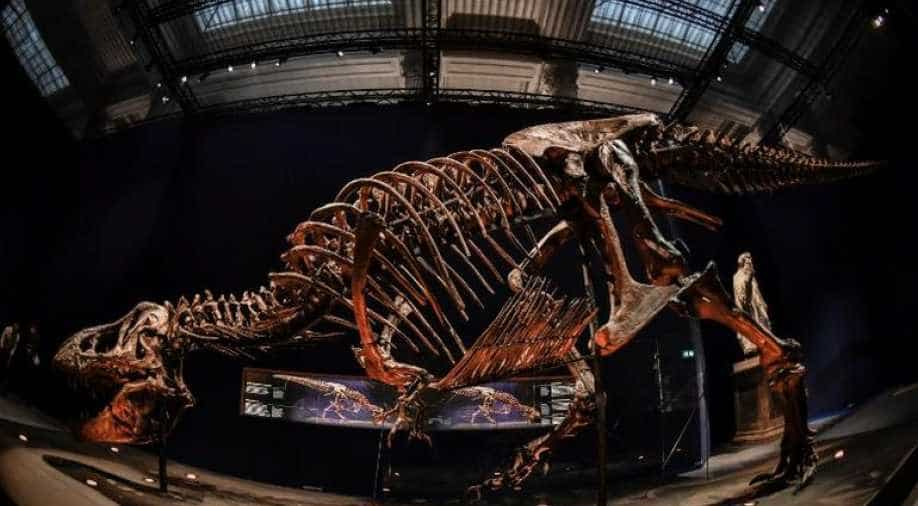First 'real look' at T-Rex skeleton in Paris museum
| Updated: Jun 07, 2018, 10:50 AM IST
The skeleton is estimated to be about 67 million years old, which means Trix died shortly before the presumed asteroid strike that wiped out most life on Earth
The eight-tonne Tyrannosaurus rex finds home
Trix, an eight-tonne Tyrannosaurus rex, will find a home at Paris' Jardin des Plantes for three months from Wednesday, greeting visitors in attack mode, with her terrifying, toothy snarl mounted at eye level.
(Photograph:AFP)
T Rex fossil
The female in her 30s, unearthed in Montana in the United States in 2013, has a fully intact skull and is among the best preserved T. rex fossils ever found -- the first real skeleton of the species ever to be displayed in France, according to the Natural History Museum behind the exhibit.
(Photograph:AFP)
T Rex viewed at the Botanical garden gallery
At 12.5 metres (41 feet) in length and four metres high, Trix can be viewed at the botanical garden's Gallery of Mineralogy and Geology from Wednesday to September 2.
(Photograph:AFP)
T Rex fossil
The female in her 30s, unearthed in Montana in the United States in 2013, has a fully intact skull and is among the best preserved T. rex fossils ever found -- the first real skeleton of the species ever to be displayed in France, according to the Natural History Museum behind the exhibit.
(Photograph:AFP)
;T Rex viewed at the Botanical garden gallery
At 12.5 metres (41 feet) in length and four metres high, Trix can be viewed at the botanical garden's Gallery of Mineralogy and Geology from Wednesday to September 2.
(Photograph:AFP)
T Rex- 67 milliom years old
The skeleton is estimated to be about 67 million years old, which means Trix died shortly before the presumed asteroid strike that wiped out most life on Earth, and all non-avian dinosaurs, some 65.5 million years ago.
(Photograph:AFP)
Trix' favourite prey also seen
The exhibition will also include reconstructed examples of Trix' favourite prey, including a duck-billed, vegetarian hadrosaur, said the museum.
